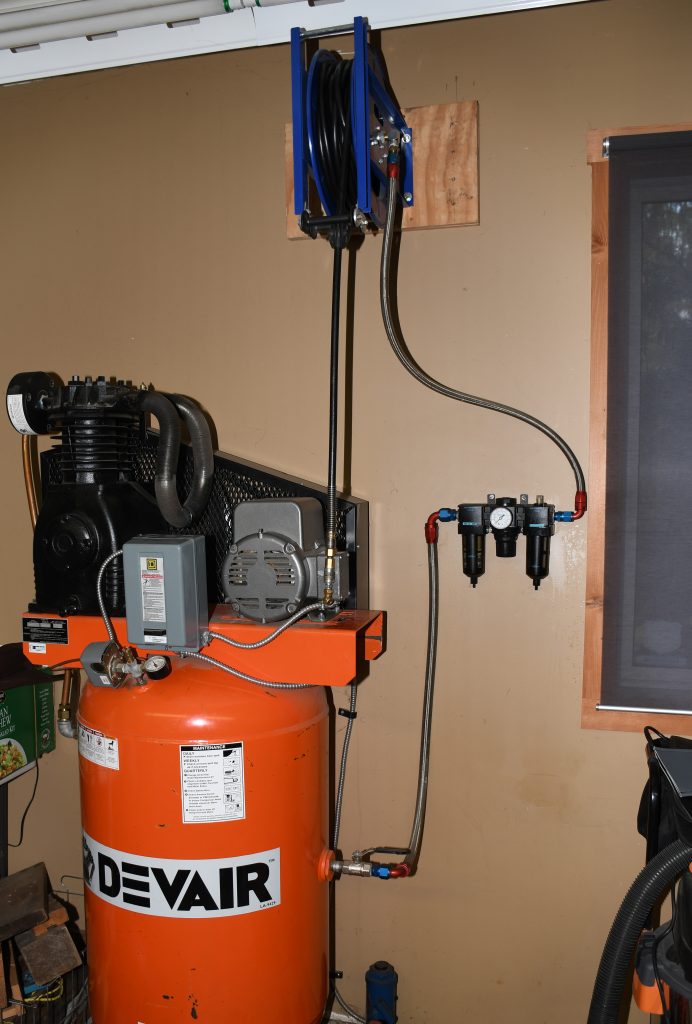
Having a tool like a big air compressor in your workshop is obviously a great asset. No surprise to seasoned enthusiasts. It can be used to perform any number of jobs ranging from powering air tools to painting a complete car. But with a big stationary compressor, you’ll likely find some accessories come in handy. Some of those include hose reels, tool oilers, water traps and pressure regulators.
Why do You Need a Hose Reel?
A lot of folks just hate tripping over air hoses. What often happens when a compressor is plumbed is that twenty-thirty-forty or fifty feet of airline is purchased in bulk. Sometimes an old wheel is used to wrap up the hose. But more often than not, that wrapping up process only happens once a day. The rest of time you deal with a big rubber hose plunked somewhere on the workshop floor.
The answer is a hose reel.
I have a Prevost commercial reel in my little shop. It has approximately 50 feet of 3/8-inch (ID) hose. That’s long enough for me to reach every corner of the two-bay workshop, plus it gives me sufficient room to reach outside to air up a tire if necessary. The ratcheting reel itself is heavy, at over 41 pounds. In order to hang it, a carpenter pal came up with the idea of sandwiching a couple of pieces of 1/2-inch plywood together allowing the load to be spread over several studs in the wall. We used a number of extra-large wood screws to attach it to the studs. The idea works great and the hose reel (along with the compressor) has been with me through three different workshop moves. By the way, the hose reel has a standard 3/8-inch coupler while the inlet (which swivels) is 3/8-inch pipe thread.
But you don’t have to search for a commercial reel. There are plenty on the market for home garages, across a range of prices and features.
One example is a John Dow JD-1250 reel. This particular open-face example is set up with 1/2-inch hose. The hose length is 50 feet and it can accommodate air or water.
Another option is the Legacy Manufacturing ZillaReel. These are closed face examples, with plastic reels. The winding system automatically layers the hose back and forth across the reel. A latching mode switch is incorporated in order to stop the hose every three feet for extended use or it can free wheel for automatic rewinding. The actual hose is hybrid polymer Flexzilla hose engineered with zero memory, extreme all-weather flexibility, and proves kink resistant under pressure.
If you don’t want a wall mounted hose reel, check out this portable hose reel from Legacy Manufacturing. It’s fitted with 100 feet of 3/8-inch Flexzilla airline.
Air Compressor Oilers & Regulators
With air tools, it’s always more convenient to have inline oiling rather than having to crack open an oiling port and lube an air tool each time you’re using it (or stop and lube it while it’s in use). I use a Wilkerson C28 commercial water trap/oiler/pressure regulator combination. Mine happens to be a 3/8-inch line example. The regulator is adjustable from 0 to 125 PSI and it’s self-relieving. The 6-ounce capacity filter has a 5-micron element, while the lubricator comes with a 6.1-ounce bowl along with a sight level glass.
Fair enough, but like hose reels, it’s not necessary to buy sometimes pricey commercial oilers or water traps or regulators for many home workshops. There’s a large variety of different shapes and sizes available, all of course with different features and different price points.
One really good option is a Reading Technologies Stealth Filter. This filter includes a pressure regulator and gauge, with a maximum PSI figure of 150. Final filtration is 1.0 microns and the filter is a spin-on arrangement. It features 1/2-inch NPT inlet and outlet ports. (You can also get these filters without the regulator.)
DeVilbiss offers a FinishLine series air control assembly complete with a 5-micron filter, pressure regulator, and gauge. Maximum pressure is 135 psi. The inlet side threads measure 1/2-inch NPT while the outlet is 1/3-inch.
When it comes to combination filters/regulators/oilers, Milton’s Exelair is a good choice. It is supplied with a 40-micron sintered bronze filter element, integral regulator, a dial pressure gauge, and an oiler with a sight gauge. It’s adjustable from 5 PSI to 120 PSI, and has a maximum airflow of 175 CFM. The package also includes a mounting bracket.
If you’re looking for a simple standalone oiler, here’s a good example from Milton Industries. It’s a simple device with large inlet and outlet ports. It’s rated to 200 maximum PSI and has bowl capacity of 29 ounces.
Plumbing a Reliable Shop Air System
When it comes to air reels, filters, lubricators and compressors, it’s clear you have to plumb them somehow. And yes, there are a lot of different ways to plumb air lines.
I like to recycle old race car hardware. I’ve been working with braided hose and AN fittings on race cars for the better part of 40 years. As a result, I have a pretty big collection of take-offs and spare fittings. What I did was to reuse those -10 AN and -12 AN hoses, hose ends, and NPT-to-AN adapters to plumb my compressor. It turned out rather clean and it works extremely well. Best of all, the cost was negligible. (Just make sure to clean the inside diameter of the hose and fittings prior to use.) Check it out in the pics after this article.
In the end, there are plenty of choices when it comes to hose reels and accessory components for your shop compressor. Take it from experience, good choices can certainly make life way easier in the shop. Besides, it sure beats the heck out tripping over wayward compressor lines.
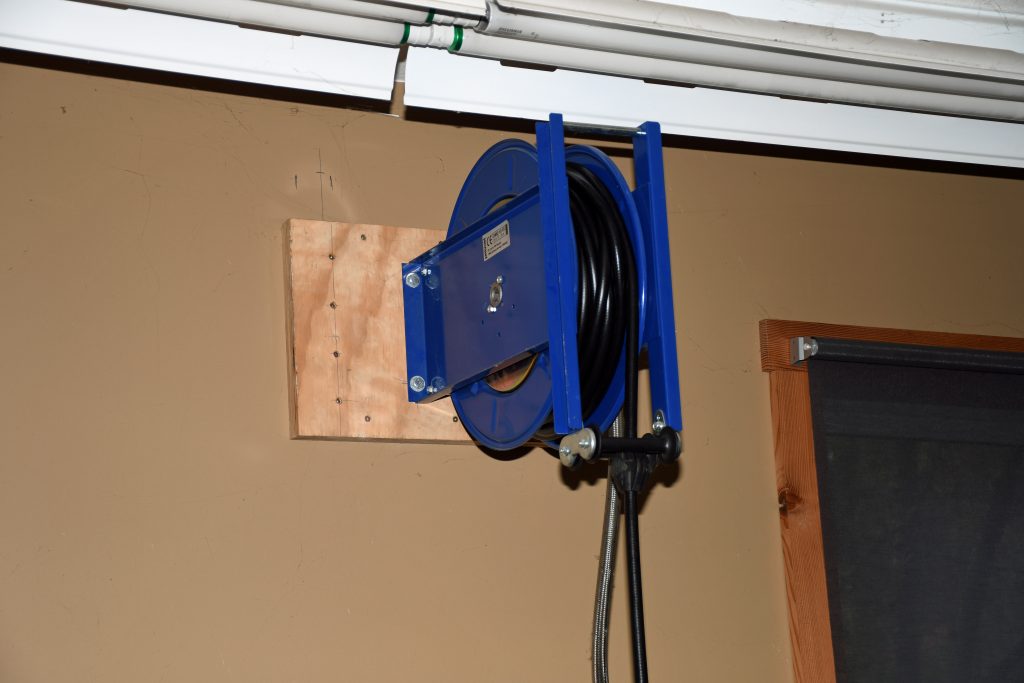
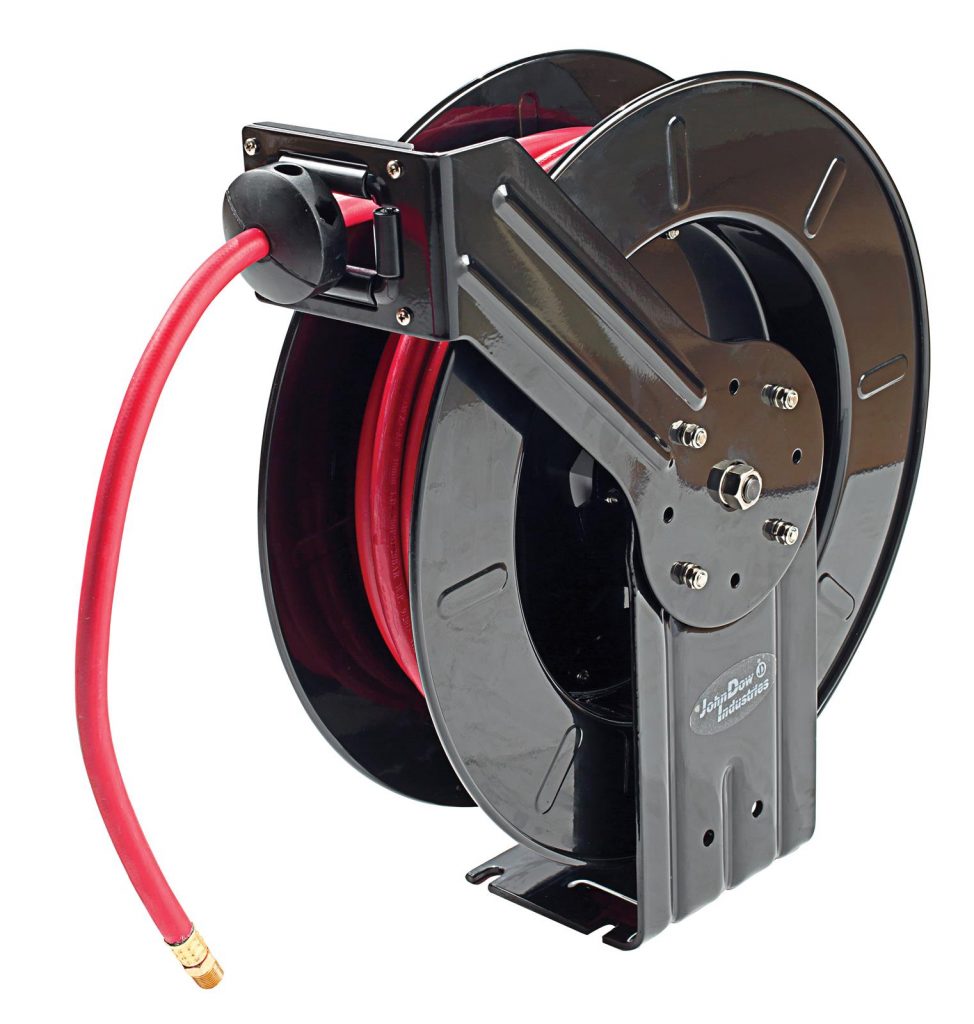
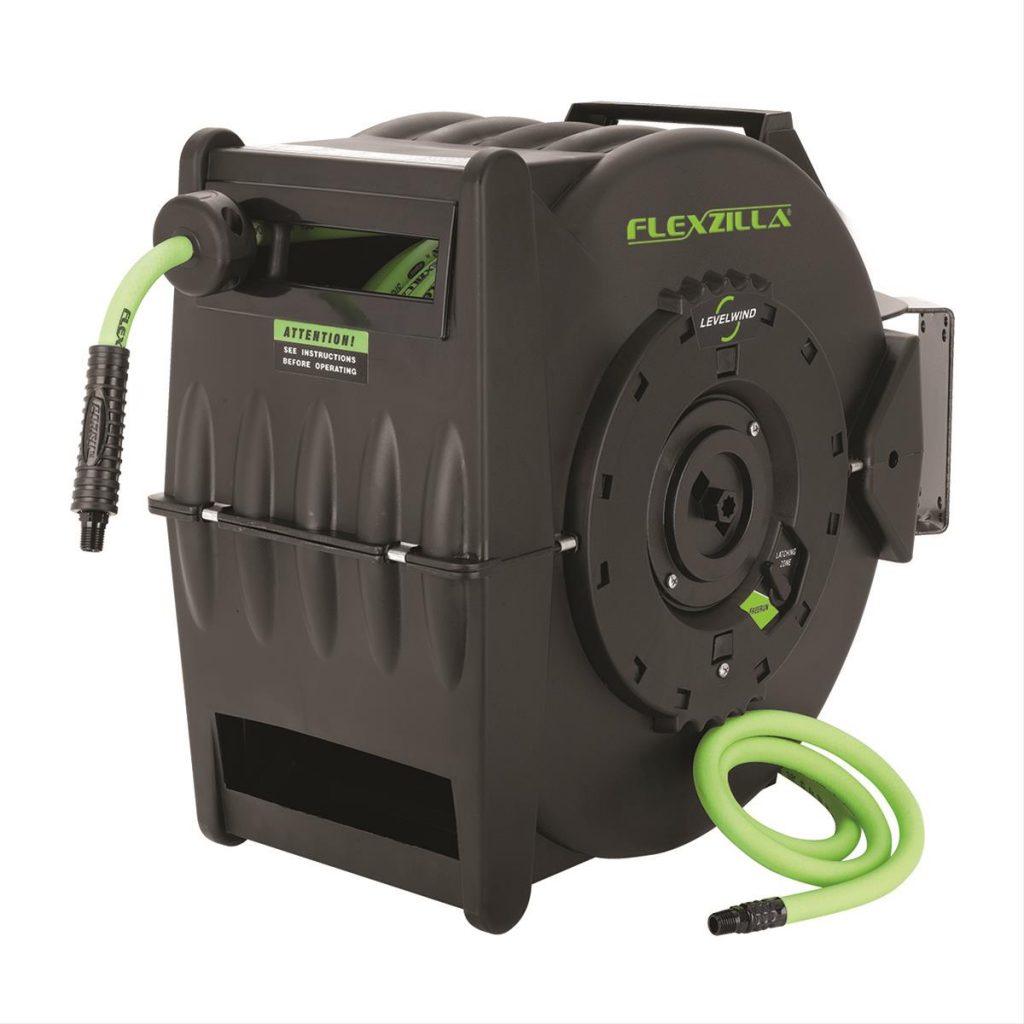
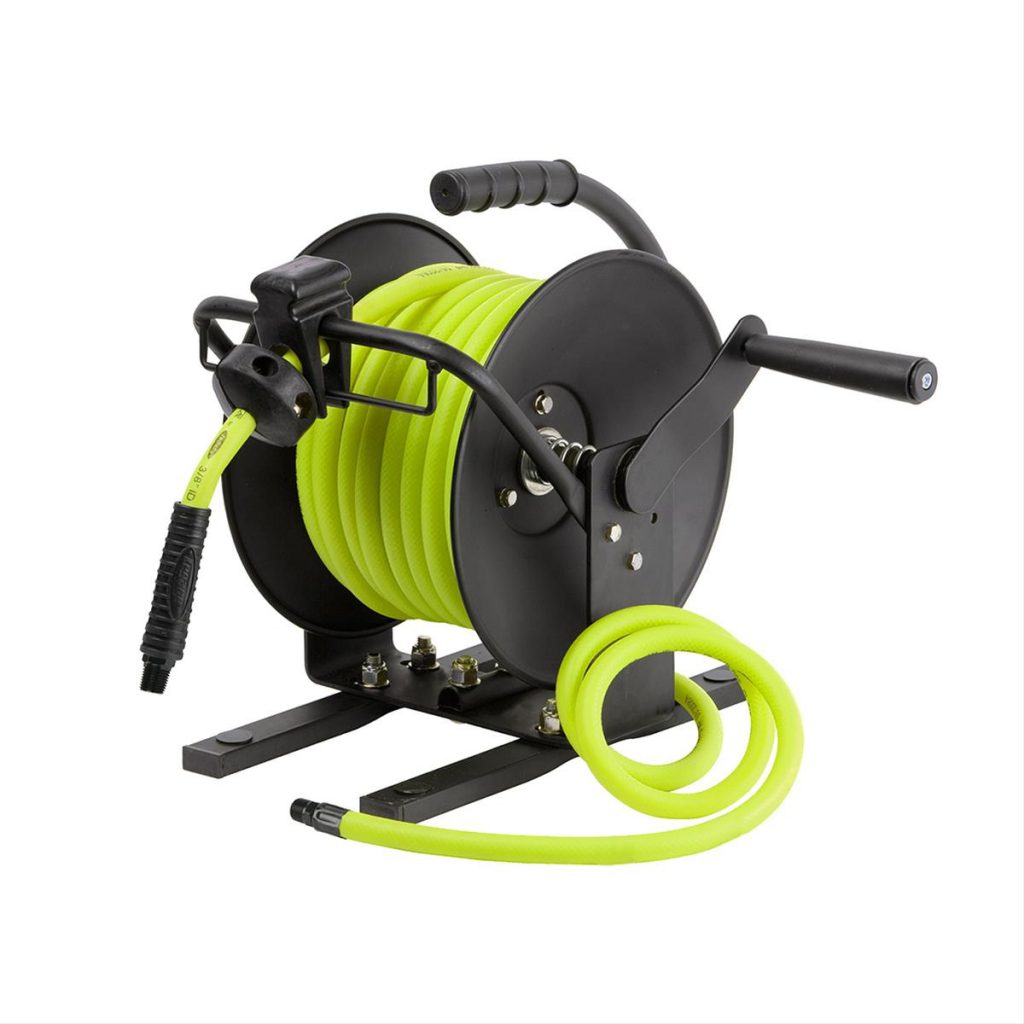
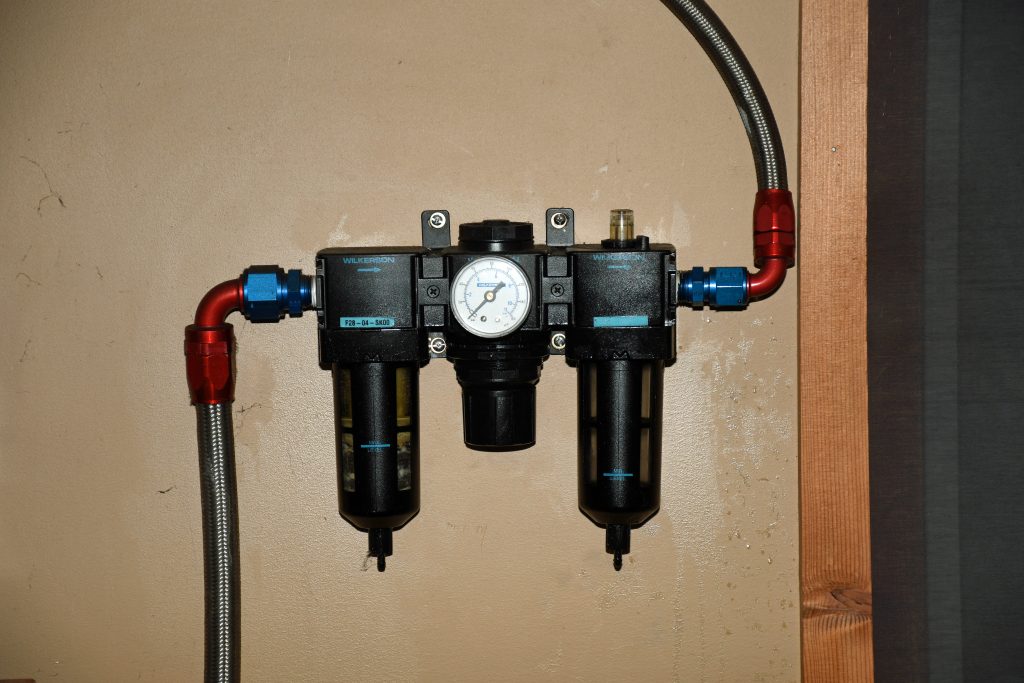
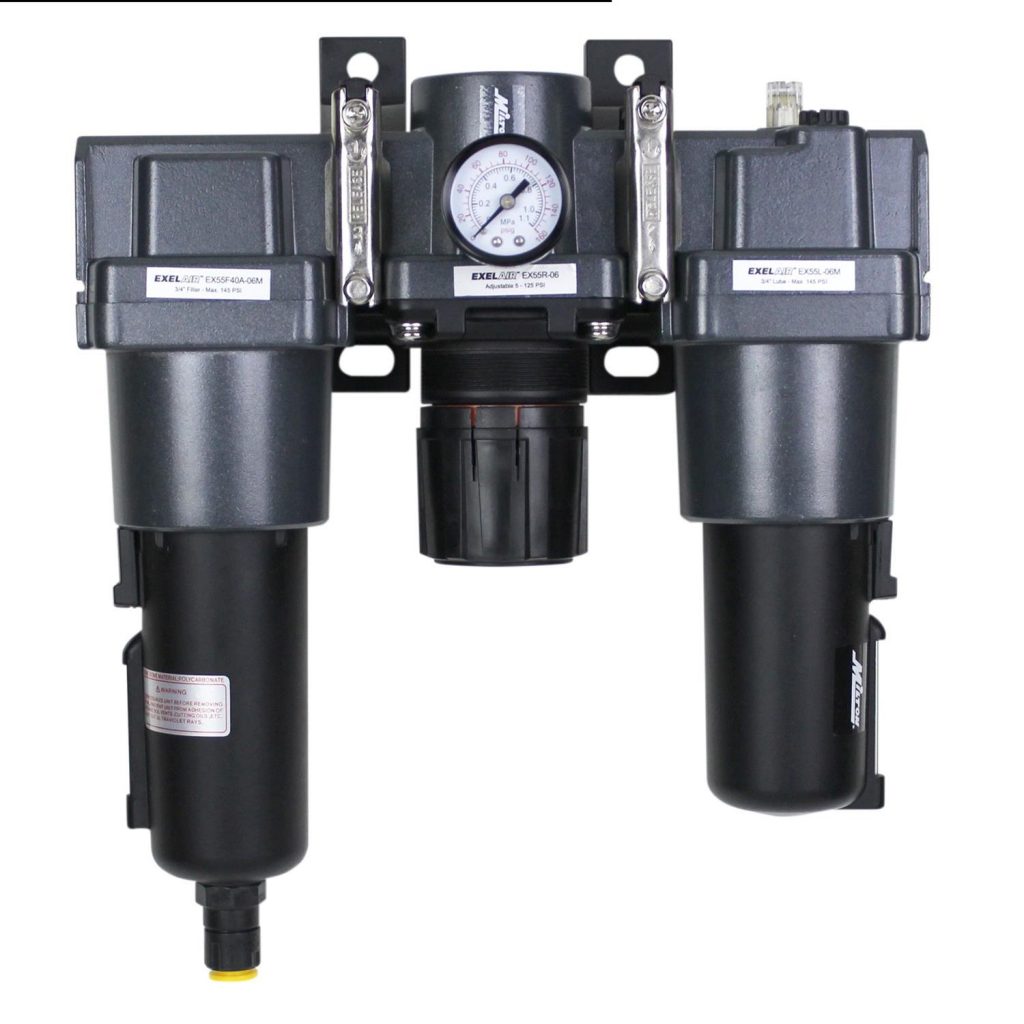
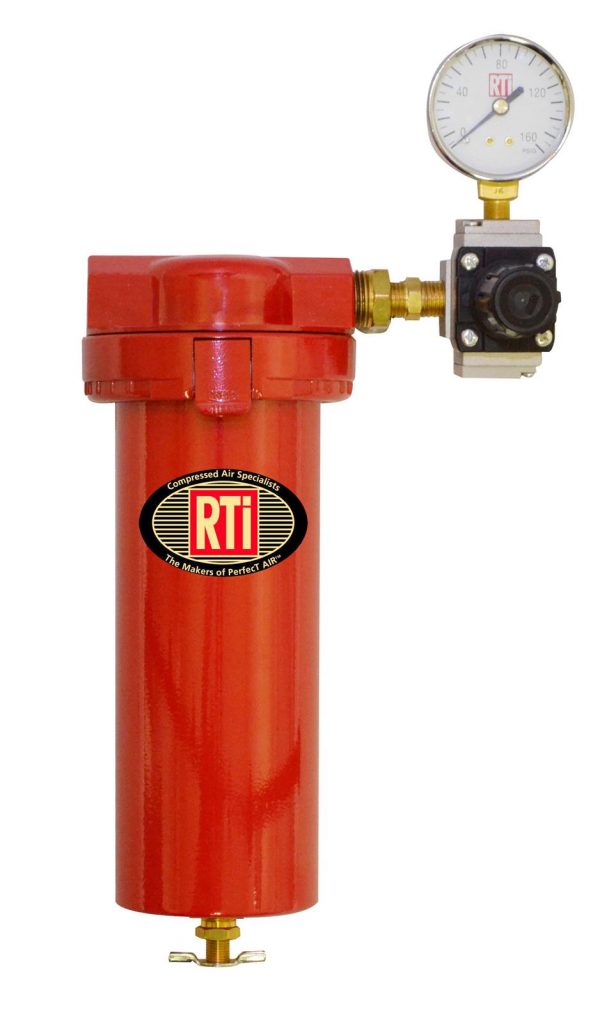
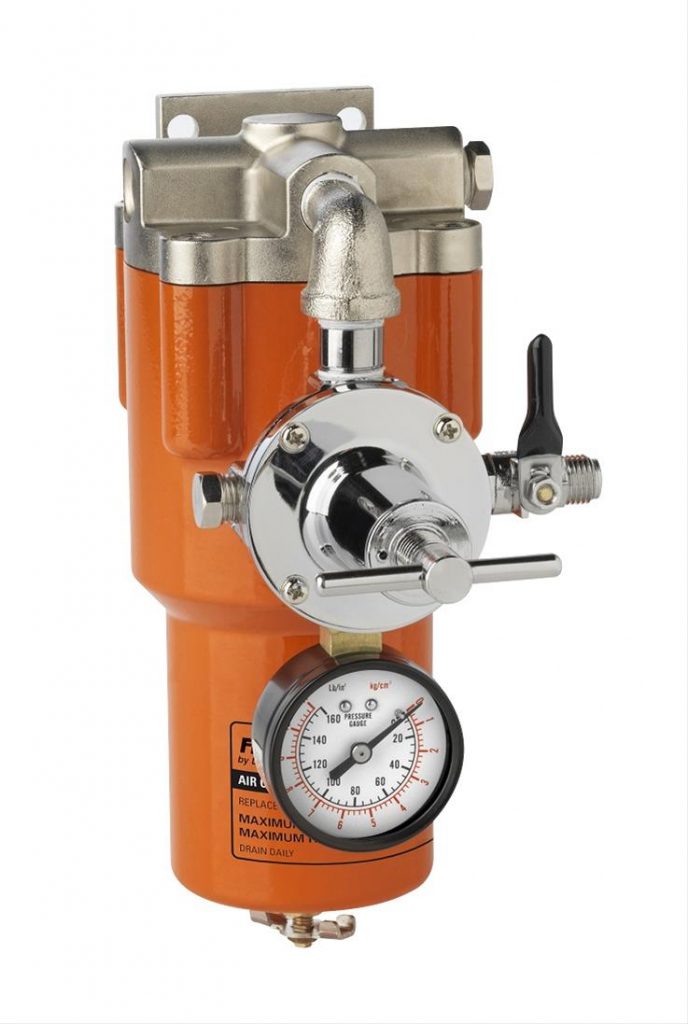
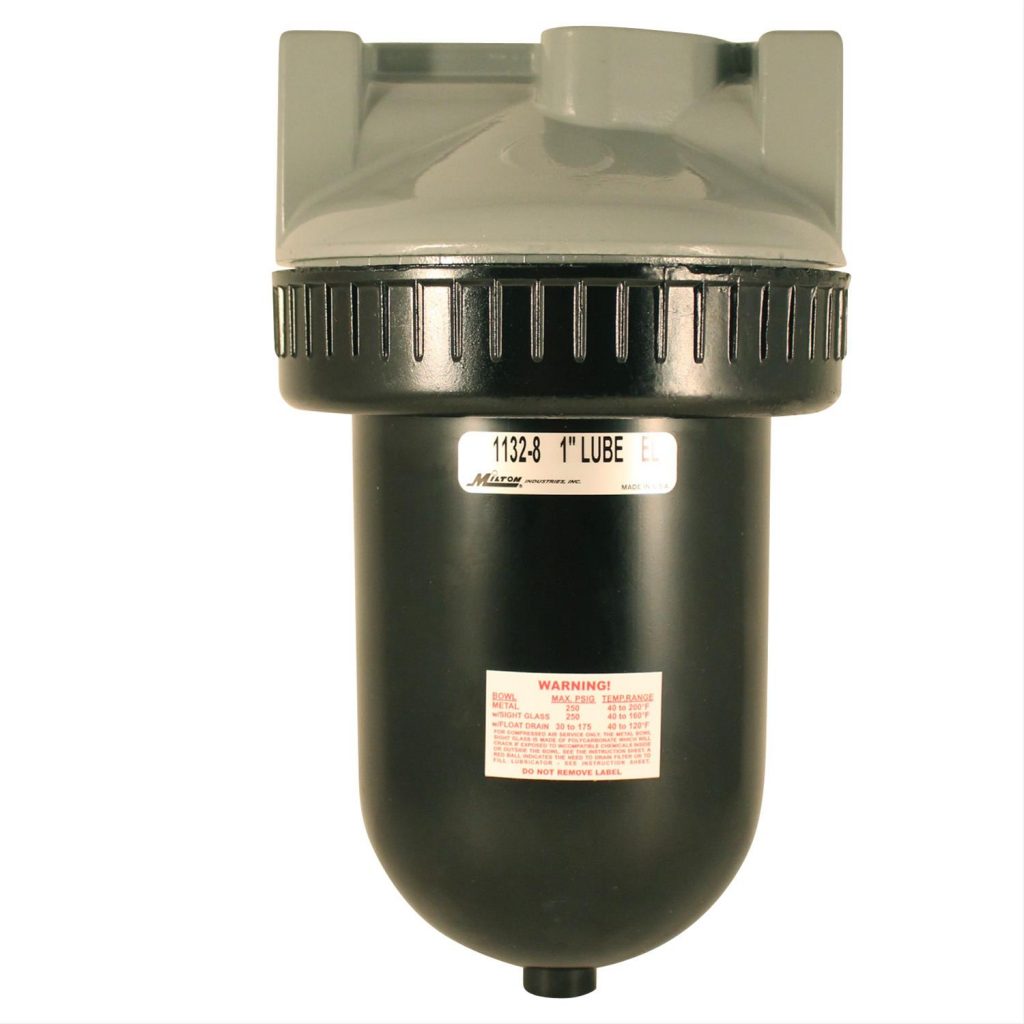
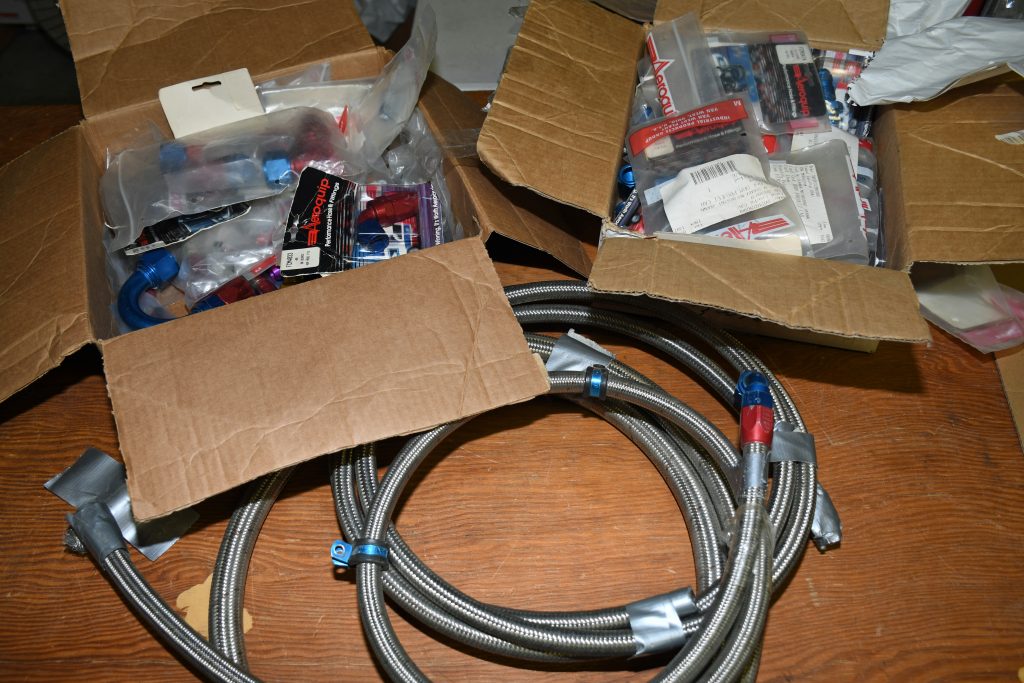
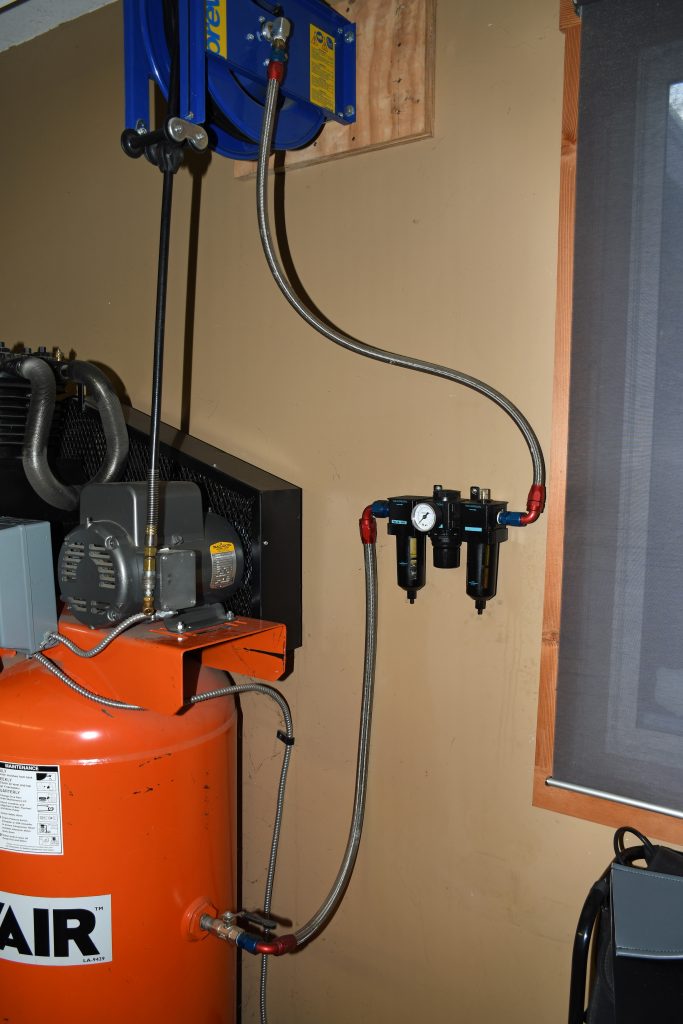

Very informative and clearly written, thks
Thomas Ray Pulliam